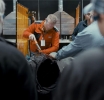Collision
GAA Invests in Estimation Training
Drive Forward: The Need for Continuous Training in Collision Repair in the Age of Emerging Technologies

The collision repair industry must adapt to the modern era of training. Today’s vehicles are equipped with complex technological systems, rendering traditional methods and tools obsolete. Advanced Driver Assistance Systems (ADAS), electric vehicles (EVs), and the increased use of lightweight materials have created new challenges and expectations. In this ever-evolving field, continuous training is essential to ensure employee safety, maintain repair quality, and strengthen business competitiveness.
Technology as the Driver of Change
Innovations such as ADAS, EVs, and advanced materials are transforming the repair process, requiring a deep understanding of digital systems and diagnostics. For example, repairin g a bumper may now involve recalibrating sensors, while even a minor dent could affect the battery housing or alignment. Modern repairs therefore require a careful blend of craftsmanship and technological expertise.
Continuous Training: An Essential Priority
Many experienced technicians began their careers before the rise of EVs or ADAS, with skills suited to an earlier generation of vehicles. However, given today’s rapid advancements, it is imperative that these professionals acquire new knowledge. To stay ahead, training must evolve from traditional repair methods to include diagnostics, sensor calibration, and connected vehicle systems. This equips technicians for long-term success in a constantly changing field.
The consequences of skill gaps are very real. Inadequate repairs can compromise occupant safety. Errors in handling high-voltage systems can cause injury. Collision repair businesses that fail to keep up with evolving standards risk damaging their reputation and losing customers. Continuous training is no longer optional—it is the foundation of a sustainable, trustworthy repair business.
Technological Change in Collision Repair
ADAS and EVs have introduced new levels of complexity into repair environments. Even minor collisions, such as a bumper tap, can affect networks of cameras, sensors, and control modules, requiring precise calibration to ensure proper vehicle operation. At the same time, customer expectations have risen, with safety and reliability at the top of their concerns. In this high-stakes environment, the margin for error is shrinking rapidly.
Training as a Strategic Imperative
To rise to the challenge, Canadian collision repair professionals must view training as a strategic necessity—one that ensures excellence in every repair and secures the future of the industry.
Stay up to date with the latest changes and technological advancements in collision repair. Visit [i-car.ca](https://i-car.ca) to explore the course catalog and get started.

L'Automobile Magazine
News
Business Directory



 En
En  Fr
Fr 


